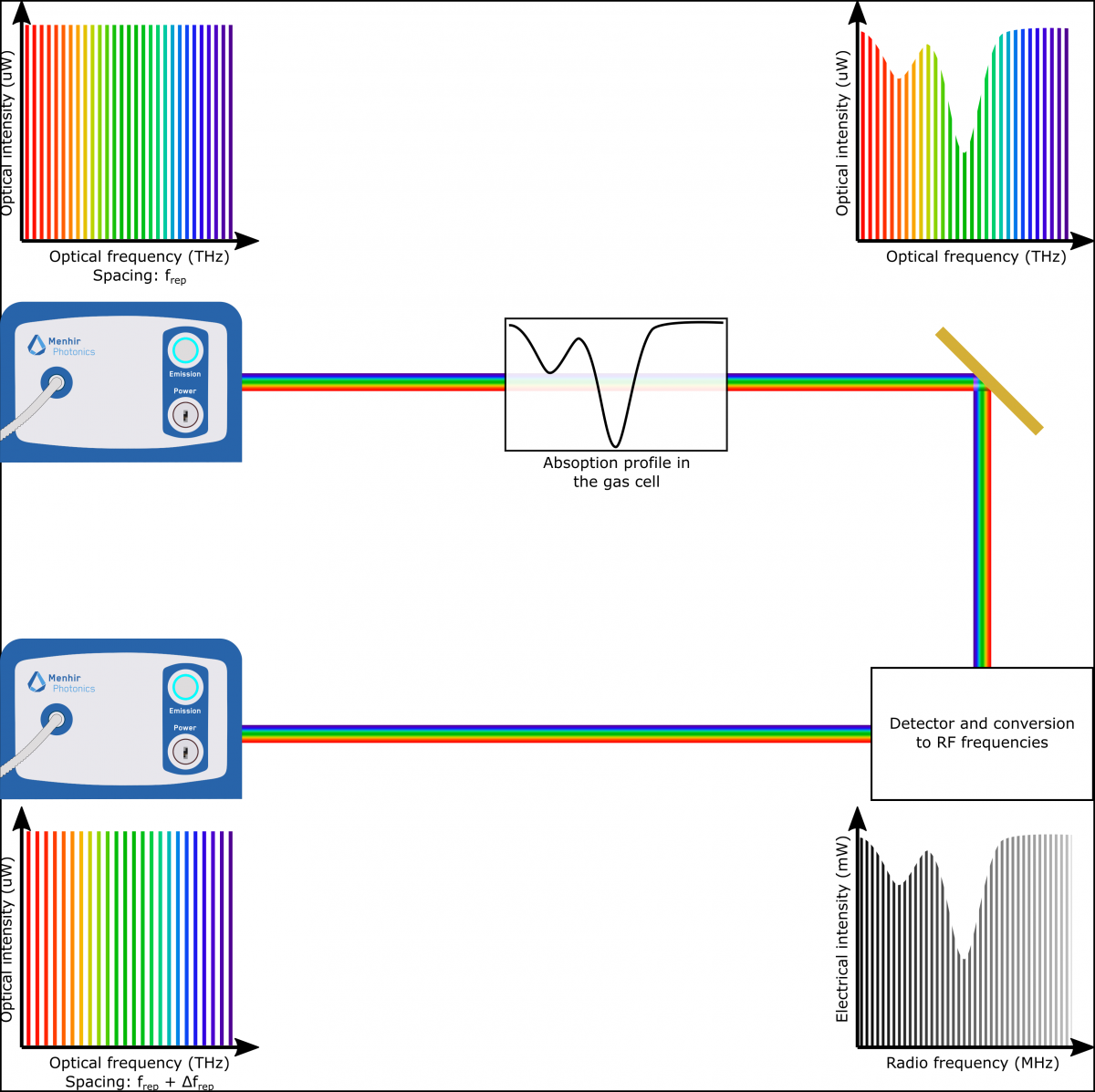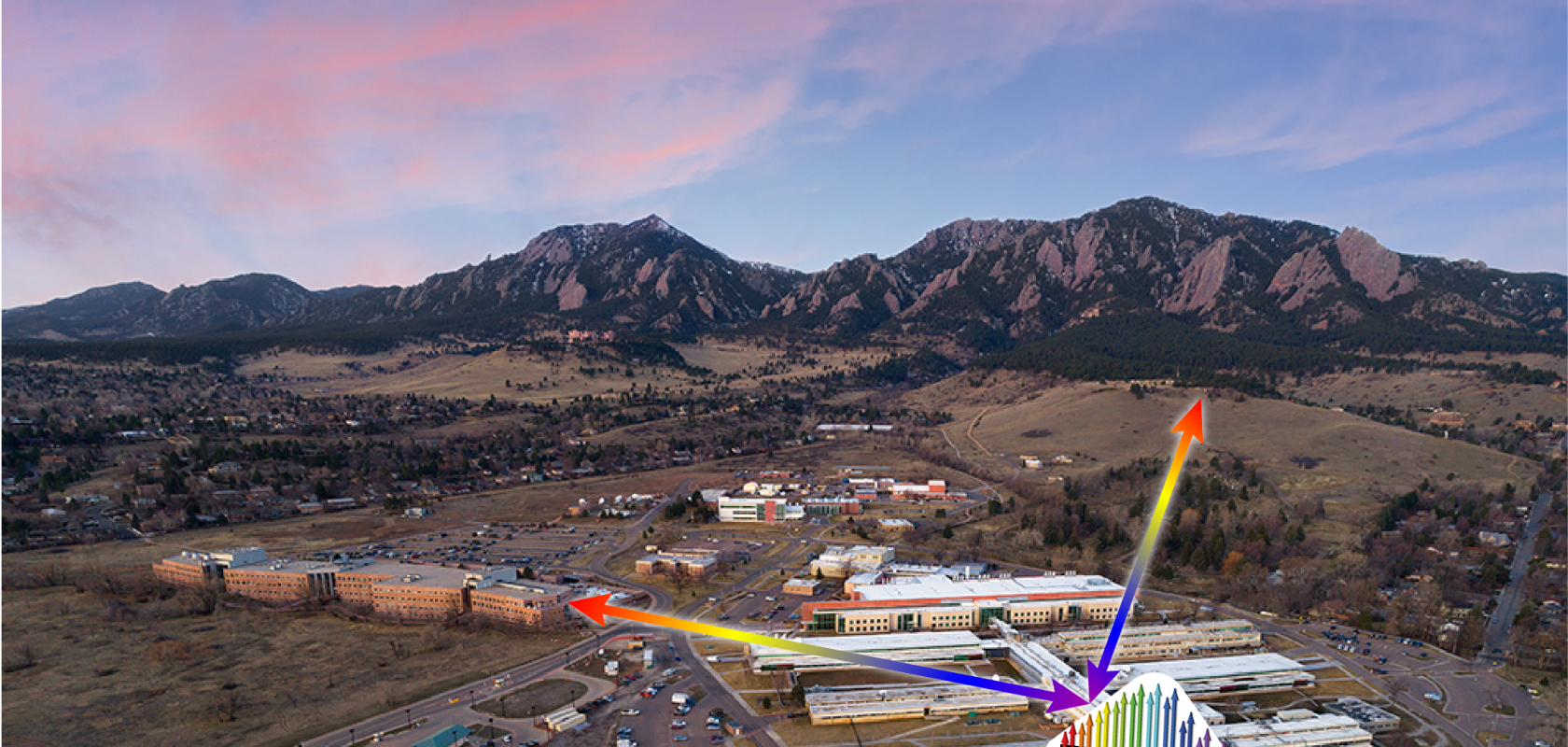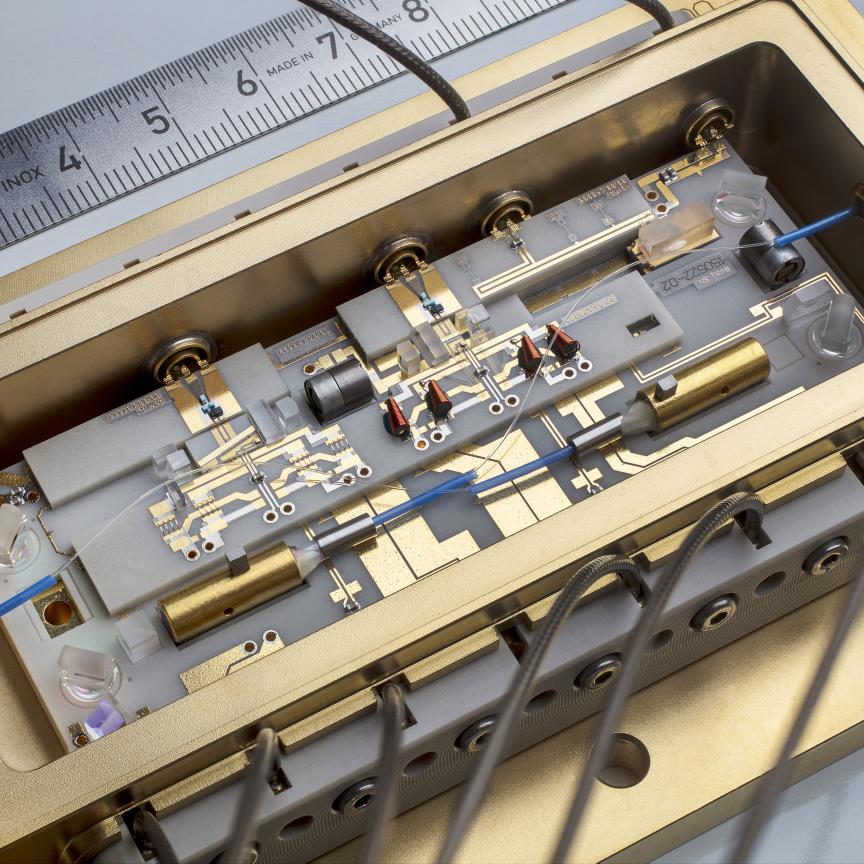Keely Portway finds out how advances in dual-frequency comb spectroscopy could help to significantly speed-up the rate of detection in a wide range of applications
Optical frequency combs are not a new or developing technology. They have been around for more than 20 years, having first been developed for applications in atomic clocks.
Frequency combs quickly became recognised for bringing new approaches to spectroscopy over broad spectral bandwidths. More recently, dual-comb spectroscopy has demonstrated advantages over traditional frequency comb spectroscopy in terms of resolution and sensitivity. Dual-comb spectroscopy uses two optical frequency combs that emit a spectrum of frequencies. It allows for broadband precision spectroscopic measurements with high acquisition rate, bringing advances in accuracy and speed.
One recent example from earlier this year, saw a team of researchers at the National Institute of Standards and Technology (NIST) build a laser frequency-comb instrument to precisely measure air quality. The team’s existing openpath, dual-comb spectroscopy was extended to the mid-infrared 5 µm atmospheric window, enabling atmospheric concentration retrievals of multiple airborne greenhouse gases and air pollutants.
The researchers demonstrated the system over round-trip paths with lengths of 600m and 2km. The light from two frequency combs was combined in an optical fibre and transmitted from a telescope at the top of a NIST building in Boulder, Colorado. One beam was sent to a reflector located on a balcony of another building, and a second beam to a reflector on a hill. The comb light bounced off the reflectors and returned to the original location for analysis to identify the gases in the air.
The NIST had previously collaborated with Kansas State University (KSU), using a dual comb system to identify trace gases based on the exact shades and amounts of infrared light absorbed by the atmosphere when the comb light is sent back and forth across open-air paths, in what was thought to be the first use case for dual-frequency comb spectroscopy in agriculture. The researchers said that pairing two combs with different spacings of ‘teeth’ for identifying exact colours of light made the analysis more precise.
Picture perfect
Last year, a research team from Universidad Carlos III de Madrid used dual-comb spectroscopy to quickly acquire extremely detailed hyperspectral images, which they hope will benefit applications such as chemical analysis and biomedical sensing. The researchers used the method to acquire hyperspectral images of ammonia gas escaping from a bottle. They achieved an optical resolution of 1 GHz at video rates of 25-frames-per second, with each frame containing 327,680 individual spectral measurements. According to the researchers, the resolution they achieved allows easy distinction between different gases.
One of the key challenges, as with any technological advances, is bringing it from the research laboratory into the market for real-world use. There are companies e that have begun to industrialise dual-comb spectroscopy. As an example, and in cooperation with NIST, researchers from the University of Colorado Boulder spun off a small company, LongPath Technologies, to commercialise methane detection capability using the dual frequency combs. Likewise, Japanese firm XTIA is already supplying its rangefinder tools using dualcomb technology into a number of industries, including biology, chemistry, astronomy and optical communications.
Discussing the transition from lab to industry, Florian Emaury, co-founder and CEO of ultrafast laser and photonic solutions, Menhir Photonics, explained: ‘This technology is not new but is being demonstrated now that it works, and we have lasers which have an initial capability to make it happen in a reliable way in the lab, but also to move it towards industry.’
Emaury likened the industrialisation of dual-comb spectroscopy with spaceX. ‘Everybody knows we can go back to the moon’ he said. ‘They don’t only talk about it, they make it happen. The same needs to happen with this technology. It needs to be reliable enough and cheap enough, with the right performance that it can move out of the lab and into industry.’
Worth the effort
For Emaury, the advantages of dual-comb spectroscopy are worth the effort, with one of the greatest being the high repetition rate. ‘Some companies are doing it at 100 MHz,’ he said. ‘We do it at 1 GHz. There have been many demonstrations that dual-comb spectroscopy can work with all lasers, but it is more important to achieve very fast speeds. In spectroscopy, speed is important to follow reactions live. This is typically used for studying gas combustion, because you can follow up how fast the gas is going to explode. If you can make one measurement really fast, it means you can do images with it. And that’s the new generation, hyperspectral imaging.’

Dual-comb spectroscopy: two individual frequency combs with slightly different repetition rates are beaten onto a receptor, for example, a fast photodiode, to produce an RF comb. When the light of one of the combs gets absorbed by a chemical medium, the absorption profile is directly imprinted on the RF comb profile (credit: Menhir Photonics)
Emaury referred to a demonstration with partner, the Center for Free-Electron Laser Science – CFEL, which demonstrated a dual-comb system operating at a high repetition rate of 1 GHz based on mature, digitally-controlled, lownoise femtosecond oscillators. This, he said, compared to conventional lower repetition rate (∼100 MHz), represents a 100-fold improvement in terms of the Nyquist criterion, while still providing adequate spectral sampling even for narrow molecular absorption fingerprints.
The possibilities offered by this higher repetition rate were explored through two spectroscopic experiments lying outside of the reachable parameter space of 100 MHzbased systems, with the potential for broadband operation demonstrated by performing spectroscopy of atmospheric water absorption features near 1375 nm over 4 THz with a 3 kHz repetition rate detuning. This showed excellent agreement with the high-resolution transmission molecular absorption (HITRAN) online database. Real-time rapid spectroscopy of acetylene was performed with a 600 GHz optical span full spectrum acquisition in 5 µs, holding high potential for real-time spectroscopy of fast processes. High mutual coherence was established between the two frequency combs by leveraging a fully digital, flexible locking scheme based on field programmable gate arrays (FPGAs), providing new opportunities for dual-comb spectroscopy with slow detectors.
To put it into context, Emaury explained: ‘If, when making one measurement you need 10 seconds, then if you want to make an image, which is 1 million points, you need a long time. If for one measurement, one point lasts only 5 µs, then in seconds you can fully image biological tissues or other samples that can provide meaningful information, because you have a spectrum. This is important because it can enable new applications where not only single body measurements, but multi-point measurements can be taken.’
Emaury likened the advances in technology with those of cameras. ‘If you look at the first cameras in 1850,’ he said, ‘they could not stay fixed for 10 minutes to take pictures, so people only took still pictures. But, as soon as pictures could be taken faster, what happened? We started to make video. Speed is an advantage in developing applications and photography moved towards video or filmmaking in the same way.’
References
Paper: F.R. Giorgetta, J. Peischl, D.I. Herman, G. Ycas, I. Coddington, N.R. Newbury and K.C. Cossel. Openpath Dual-comb Spectroscopy for Multispecies Trace Gas Detection in the 4.5 μm to 5 μm Spectral Region. Laser and Photonics Review. Published June 30, 2021. DOI: 10.1002/lpor.202000583
Paper: P. Martín-Mateos, F. U. Khan, O. E. Bonilla Manrique. Direct hyperspectral dual-comb imaging, Optica, 7, 3, 199-202 (2020). DOI: doi.org/10.1364/ OPTICA.382887 or at NDT.net www.ndt. net/?id=2525
To find out more about the advantages of using a 1 GHz dual-comb spectrometer for fast and broadband measurements, download the latest whitepaper online.


